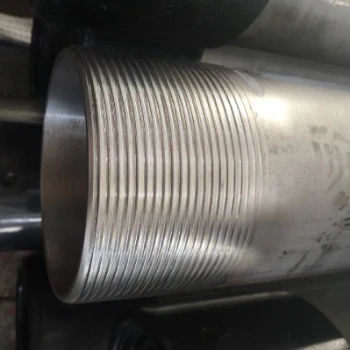- Afrikaans
- Albanian
- Amharic
- Arabic
- Armenian
- Azerbaijani
- Basque
- Belarusian
- Bengali
- Bosnian
- Bulgarian
- Catalan
- Cebuano
- Corsican
- Croatian
- Czech
- Danish
- Dutch
- English
- Esperanto
- Estonian
- Finnish
- French
- Frisian
- Galician
- Georgian
- German
- Greek
- Gujarati
- Haitian Creole
- hausa
- hawaiian
- Hebrew
- Hindi
- Miao
- Hungarian
- Icelandic
- igbo
- Indonesian
- irish
- Italian
- Japanese
- Javanese
- Kannada
- kazakh
- Khmer
- Rwandese
- Korean
- Kurdish
- Kyrgyz
- Lao
- Latin
- Latvian
- Lithuanian
- Luxembourgish
- Macedonian
- Malgashi
- Malay
- Malayalam
- Maltese
- Maori
- Marathi
- Mongolian
- Myanmar
- Nepali
- Norwegian
- Norwegian
- Occitan
- Pashto
- Persian
- Polish
- Portuguese
- Punjabi
- Romanian
- Russian
- Samoan
- Scottish Gaelic
- Serbian
- Sesotho
- Shona
- Sindhi
- Sinhala
- Slovak
- Slovenian
- Somali
- Spanish
- Sundanese
- Swahili
- Swedish
- Tagalog
- Tajik
- Tamil
- Tatar
- Telugu
- Thai
- Turkish
- Turkmen
- Ukrainian
- Urdu
- Uighur
- Uzbek
- Vietnamese
- Welsh
- Bantu
- Yiddish
- Yoruba
- Zulu
Exploring Different Types of Casing and Tubing Connections in Oil and Gas Industry
Understanding Casing and Tubing Connections in Oil and Gas Operations
The oil and gas industry relies heavily on the precise and efficient operation of casing and tubing systems. These systems are crucial for the extraction of petroleum and natural gas from beneath the Earth’s surface. This article aims to provide a comprehensive overview of casing and tubing connections, their importance, types, and the technology involved in ensuring their reliability.
What are Casing and Tubing?
In drilling operations, casing and tubing serve different but interrelated purposes. Casing refers to the large-diameter pipes that are inserted into a drilled borehole to stabilize the well, prevent collapse, and protect groundwater. It serves as a barrier against the migration of fluids into and out of the wellbore. Tubing, on the other hand, consists of smaller diameter pipes that are placed inside the casing. Its primary function is to transport the hydrocarbons produced from the reservoir to the surface.
Importance of Casing and Tubing Connections
The integrity of casing and tubing connections is paramount for the safe and efficient operation of oil and gas wells. Reliable connections ensure that high-pressure fluid can be contained, preventing blowouts, leaks, and environmental disasters. Moreover, these connections are subjected to various stresses—mechanical, thermal, and chemical—during their lifespan, making it crucial for them to be robust and well engineered.
Types of Connections
Several types of connections are used in casing and tubing applications, each designed for specific operational parameters and conditions
1. Threaded Connections This is one of the most common types. The ends of the pipes are threaded, allowing them to be screwed together. This type of connection is easy to make and can be disassembled if necessary. However, it may be susceptible to leakage if not properly installed or maintained.
casing and tubing connections

2. Welded Connections These connections are formed by welding the ends of the pipes together. Welded connections provide high strength and durability, making them ideal for high-pressure applications. However, they can be challenging to repair if damage occurs.
3. Coupled Connections In this system, a coupling—a short piece of pipe—is threaded on both ends and used to connect two pipes. Coupled connections can compensate for thermal expansion and contraction better than threaded connections.
4. Integral Connections These are manufactured as a single piece, providing excellent pressure integrity and resistance to environmental factors. They are typically found in applications where extreme conditions are expected, such as deep wells.
Advances in Technology
The oil and gas industry continually seeks technological advancements to improve the reliability and performance of casing and tubing connections. Innovations in material science, such as the development of corrosion-resistant alloys and durable polymers, enhance the life span of these connections under harsh conditions.
Moreover, non-destructive testing (NDT) techniques, including ultrasonic testing and magnetic particle inspection, are employed to evaluate the integrity of connections before they are put into service. These technologies allow for the detection of flaws that could compromise the performance and safety of the wells.
Conclusion
Casing and tubing connections are a vital component of oil and gas operations, playing an essential role in the safe extraction of hydrocarbons. Understanding the various types of connections and the technologies used to ensure their reliability is crucial for industry professionals. As the industry evolves, continued investments in technology and materials will likely enhance the integrity and longevity of these critical systems, ultimately leading to safer and more efficient operations. The importance of maintaining robust casing and tubing connections cannot be overstated, as their failure could lead to costly and dangerous incidents, impacting both the industry and the environment.
-
Tubing Pup Joints: Essential Components for Oil and Gas OperationsNewsJul.10,2025
-
Pup Joints: Essential Components for Reliable Drilling OperationsNewsJul.10,2025
-
Pipe Couplings: Connecting Your World EfficientlyNewsJul.10,2025
-
Mastering Oilfield Operations with Quality Tubing and CasingNewsJul.10,2025
-
High-Quality Casing Couplings for Every NeedNewsJul.10,2025
-
Boost Your Drilling Efficiency with Premium Crossover Tools & Seating NipplesNewsJul.10,2025







